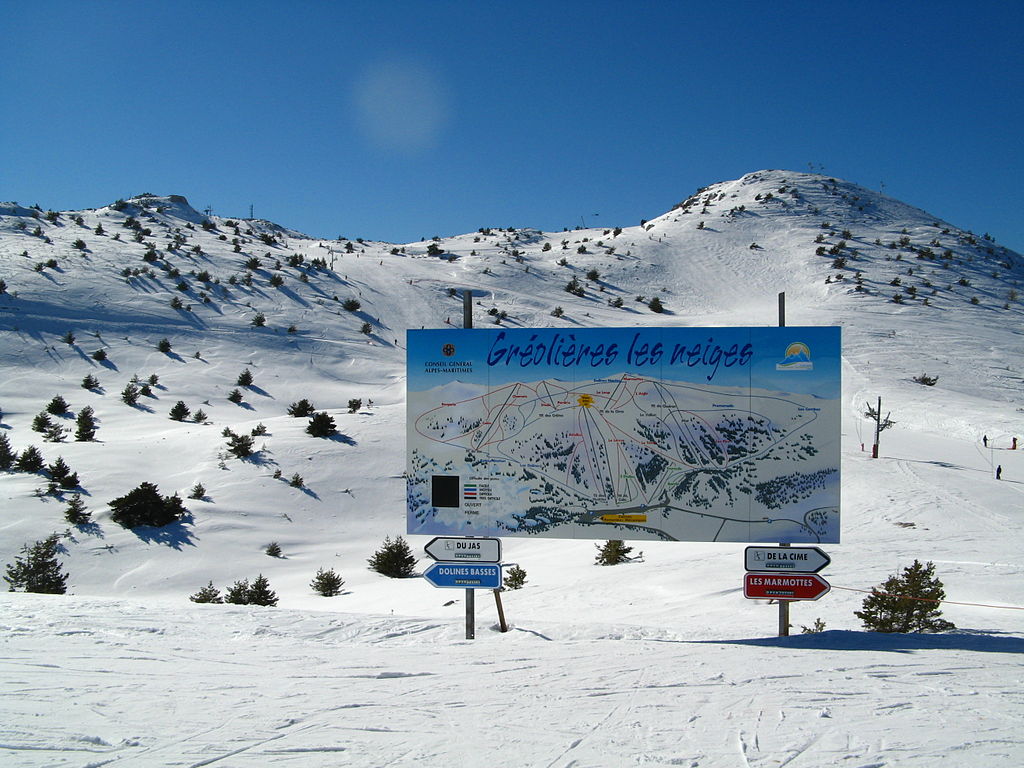With more than 300 stations de ski (ski resorts), France has a long history with sports d’hiver (winter sports). From the largest to the swankiest, or the authentic charm of old mountain villages, France boasts a formidable array of possibilities: ski alpin (m.)(downhill skiing), ski de fond (m.)(cross-country skiing), les raquettes (à neige) (f.)(snowshoes), luge (f.)(sled), and the new craze, trail sur neige (snow running).
There are five main regions called massifs (mountain range), each with its own distinct characteristics and appeals:
- Les Alpes (lay zahl-p(uh))
By far the most popular of all massifs, the Alps also has the most famous ski resorts: the legendary valley and village of Chamonix, with its spectacular Aiguille du Midi and Le Mont-Blanc (15,778 ft), Europe’s tallest mountain; the largest domaine skiable (ski area) in the world, les 3 Vallées, with over 600 km de pistes (373 miles of ski runs); les stations de ski les plus huppées (the most select ski resorts) like Mégève, Couchevel, L’Alpe d’Huez and Méribel which cater to une clientèle de luxe (a luxury clientele). Matching the awesome landscape, the rich winter food in the Alps is very much communal and relies heavily on its dazzling cheeses (comté, emmental, gruyère, beaufort, tomme) and meats: fondue savoyarde, raclettes, tartiflette.
- Les Pyrénées (lay pee-reh-neh)
Less dramatic and crowded than the Alps, but with a more wild and remote feel, the Pyrenees still offer tall mountains over 11,000 ft, with many challenges and outstanding paysages (landscape, scenery) for the mountain lover. The proximity of the Spain border and proud cultures like the Basque country give the Pyrenees a strong and varied character. The biggest ski resorts include La Mongie and the panoramic Pic du Midi (9,400 ft), Saint Lary and Font Romeu. Culture and gastronomy are deeply intertwined, and the produits du terroir (local foods) will astound the visitor, like la garbure, l’aligot, la truffade or le gâteau à la broche, and cheeses like la tomme des Pyrénées.
- Le Jura (luh zhew-rah)
Located north of the Alps, close to Switzerland, the Jura mountains are appreciated for their serene and pristine landscapes. While the lower elevations make it less conducive to downhill skiing, the Jura has become a major destination for cross-country skiing (station des Rousses), with formats like the ‘baladski’ (balade à ski, i.e ski stroll) which combines sport, nature, historic heritage and gastronomy.
- Les Vosges (lay voh-zh(uh))
With its numerous lakes, vast old forests, and warm hospitality, the Vosges mountains attract a wide range of visitors, from nature lovers to families who stay in resorts like La Bresse or châlets (m.)(chalets) refuges de montagnes (m.)(mountain huts). Famous dishes include: la choucroute garnie (sauerkraut and sausages), la tarte à l’oignon (onion tarte) and beignets de pommes (m.)(apple fritters). The Alsace wines are especially prized, with cépages (m.)(grape variety) like Gewürztraminer or Sylvaner; but so are the beers, with a savoir-faire (m.)(know-how) linked to nearby Germany.
- Le Massif Central (luh mah-seef sah(n)-trahl)
In the heart of France lies a magnificent country of dormant volcanoes (Parc naturel régional des Volcans d’Auvergne) with legendary water springs (Vichy, Volvic), remote villages, and a diversity of panoramas (m.)(panoramas). Highlights include Le Puy de Dôme (4,800 ft) with ski resorts like Besse Super Besse and Le Mont Dore; le massif du Sancy and le Cantal. The low mountains of the Massif Central abound in pristine natural landscapes where snowshoeing, cross-country skiing and chien de traîneau (dog sled rides) are especially popular.
Give the winter gift of Living Language Online French! Visit here for more information.
“Greolieres les Neige” By Patrick Rouzet (Own work) is licensed under CC BY-SA 3.0, via Wikimedia Commons
